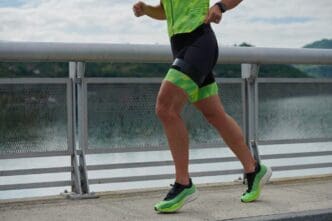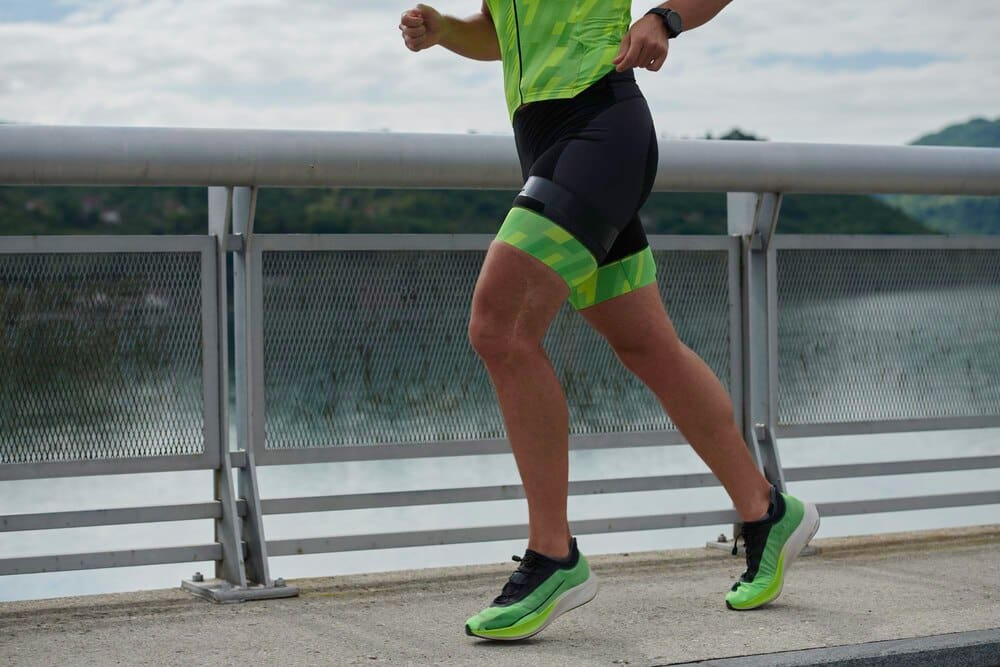For runners of all levels, from weekend warriors to elite marathoners, high-tech insoles and custom orthotics are rapidly transforming the landscape of performance, comfort, and injury prevention. These advanced footbeds, utilized within running shoes, leverage cutting-edge technology—including pressure sensors, 3D printing, and artificial intelligence—to provide data-driven insights and personalized support that traditional foam inserts simply cannot offer. The primary goal is to analyze and correct a runner’s unique biomechanics in real-time, helping to mitigate common ailments like plantar fasciitis and shin splints while optimizing running economy for a more efficient and sustainable stride.
What’s the Difference: Insoles vs. Orthotics?
Before diving into the high-tech options, it’s crucial to understand the fundamental distinction between the products you can grab off a shelf and those prescribed by a professional. The terms “insole” and “orthotic” are often used interchangeably, but they represent two very different categories of foot support.
Over-the-Counter (OTC) Insoles
Over-the-counter insoles are the familiar gel, foam, or cork inserts found in pharmacies and sporting goods stores. They are mass-produced to fit general foot shapes and sizes, categorized by basic needs like “cushioning,” “stability,” or “arch support” for low, neutral, or high arches.
Their primary function is to enhance comfort by adding a layer of shock absorption or providing gentle, non-specific support. While they can be beneficial for runners experiencing minor fatigue or seeking a softer ride, they are not designed to correct significant biomechanical issues. Think of them as a generic solution for a generic problem.
Custom Orthotics
Custom orthotics, in contrast, are medical devices prescribed by a healthcare professional, such as a podiatrist or a physical therapist specializing in biomechanics. They are crafted from a precise 3D scan or physical mold of your feet, making them uniquely yours. These devices are built not just for comfort but for correction.
The goal of a custom orthotic is to address a specific pathology or biomechanical flaw. This could include controlling severe overpronation (the excessive inward rolling of the foot), supporting a collapsed arch, or offloading pressure from an injured area like the heel in cases of plantar fasciitis. They are typically made from more rigid and durable materials to enforce proper foot alignment throughout the gait cycle.
The Rise of Smart Insoles and Advanced Orthotics
The latest evolution in foot-care technology merges the accessibility of insoles with the precision of orthotics, enhanced by the power of data. These “smart” devices move beyond passive support, becoming active tools that measure, analyze, and provide feedback on your every step.
What Makes Them “High-Tech”?
The “high-tech” label isn’t just marketing jargon; it refers to a specific suite of technologies embedded directly into the insole or orthotic. These components work together to create a detailed picture of your running form and foot mechanics.
At their core are sophisticated micro-sensors. Miniature accelerometers and gyroscopes track the motion and orientation of your foot in three-dimensional space, while dozens of tiny pressure sensors map how your weight is distributed across the sole of your foot from heel-strike to toe-off.
This data is then transmitted via Bluetooth to a companion smartphone app. The app’s software processes these raw numbers into understandable metrics, such as cadence (steps per minute), ground contact time, foot-strike pattern (heel, midfoot, or forefoot), and pronation velocity. Some platforms even use AI to deliver real-time audio coaching and post-run analysis.
Beyond electronics, advancements in materials science are also key. Many high-tech orthotics are created using industrial-grade 3D printers, which can produce intricate lattice structures that provide support exactly where needed while minimizing weight. Other models incorporate carbon fiber plates for enhanced energy return, similar to the technology found in today’s elite “super shoes.”
How High-Tech Insoles Can Elevate Your Running
The true value of this technology lies in its ability to translate complex biomechanical data into actionable improvements for the everyday runner. The benefits generally fall into three main categories: injury prevention, performance enhancement, and personalized comfort.
Injury Prevention Through Data
Many running injuries develop slowly over time, caused by repetitive stress from subtle imbalances in form. Smart insoles act as an early warning system by detecting these red flags before they escalate into a full-blown injury. For example, the app might flag that your left foot is pronating more sharply than your right, or that your ground contact time increases dramatically in the last mile of your long runs.
This information is invaluable. An alert about gait asymmetry could signal muscle fatigue or weakness on one side of your body, prompting you to incorporate targeted strength training. By identifying and addressing these small issues, you can significantly reduce your risk for common overuse injuries like IT band syndrome, runner’s knee, and Achilles tendinopathy.
Performance Enhancement
Efficient running is smooth running. High-tech insoles can guide you toward better running economy, which is the measure of how much energy you expend at a given pace. The app might provide real-time audio cues through your headphones, coaching you to “increase your cadence” or “reduce your ground contact time.”
By making small adjustments based on this feedback, you can learn to run more efficiently, allowing you to go faster or farther with the same amount of effort. For competitive runners, this data can be used to fine-tune race-day strategy and pacing, ensuring you’re not wasting precious energy with an inefficient stride.
Personalized Comfort and Support
The advent of 3D printing has revolutionized custom orthotics. Instead of relying on a generic model, these devices can be printed with variable density and structure, perfectly matching the unique contours and pressure points of your feet. This creates a level of personalization and comfort that was previously unattainable.
If a scan reveals you place excessive pressure on your first metatarsal head (the ball of your foot behind the big toe), the orthotic can be designed with a softer, more cushioned zone in that exact spot. This hyper-personalized approach ensures support and cushioning are delivered precisely where your body needs them most.
Navigating the Market: What to Look For
With a growing number of options available, choosing the right high-tech insole can feel overwhelming. A systematic approach can help you find the product that best aligns with your individual needs and running goals.
Step 1: Assess Your Needs
First, clarify your primary motivation. Are you constantly battling a nagging injury and need a medical-grade solution? Or are you a data-driven athlete looking to gain a performance edge? Perhaps you’re simply a curious runner who wants to better understand your form. Your answer will determine whether you need a smart orthotic prescribed by a professional or a data-collecting insole you can buy directly.
Step 2: Understand the Technology
Not all smart insoles measure the same things. If your main concern is how your foot lands and pushes off, look for a model with detailed pressure mapping. If you’re more focused on overall gait mechanics, a device with an Inertial Measurement Unit (IMU) that tracks motion will be more useful for metrics like cadence and pronation. For the ultimate in personalized fit, a 3D-printed custom orthotic is the gold standard.
Step 3: Consider the Ecosystem
The hardware is only half the equation; the software is equally important. Investigate the companion app. Is it intuitive and easy to navigate? Does it provide clear, actionable insights, or does it just dump raw data on you? A good app will not only show you your numbers but also explain what they mean and suggest specific drills or form adjustments.
Finally, consider practicalities like battery life, durability, and cost. These devices are an investment, with prices ranging from a couple of hundred to over five hundred dollars. Weigh the features and the quality of the data against the price to ensure you’re getting value that matches your commitment to running.
From Scan to Run: The User Experience
The process for acquiring and using these devices is more involved than simply buying an insert off the shelf, but it’s designed for maximum precision.
The Initial Assessment
For custom high-tech orthotics, the journey typically begins with a professional assessment. A podiatrist or physical therapist will conduct a physical evaluation and a gait analysis, often having you walk or run on a treadmill. They will then take a 3D scan of your feet to capture their exact topology, which serves as the blueprint for your custom device.
The Break-In Period
It’s critical to understand that your body needs time to adapt to a new orthotic, especially one designed to correct your mechanics. It will likely feel strange, or even slightly uncomfortable, at first. Experts recommend a gradual break-in period: start by wearing them for an hour or two of walking, then slowly incorporate them into short runs, gradually increasing the duration over one to two weeks until they feel natural.
Leveraging the Data
Once you’re running comfortably, the real work begins. The key is to engage with the data consistently. Don’t obsess over the numbers from a single run; instead, look for trends over weeks and months. Use the feedback from the app to make small, conscious changes to your form. This iterative process of running, analyzing, and adjusting is what leads to lasting improvement.
High-tech insoles and orthotics represent a powerful convergence of medical science and personal technology. They have evolved from simple passive cushions into active, intelligent tools that empower runners to take unprecedented control over their health, prevent injuries before they start, and unlock new levels of performance. For any runner serious about longevity and improvement, they are a technology worth exploring.







